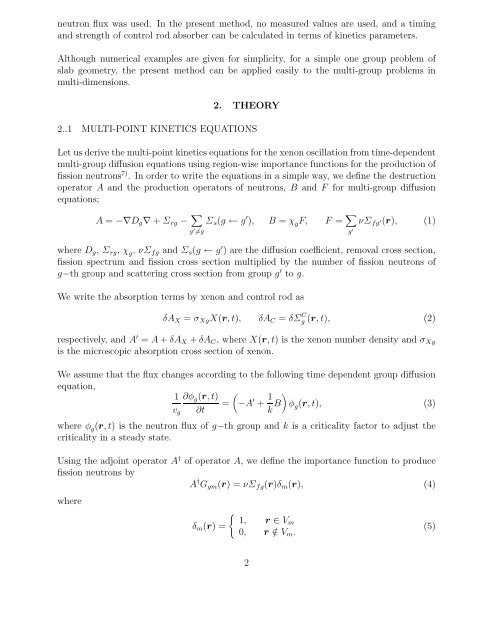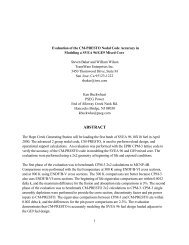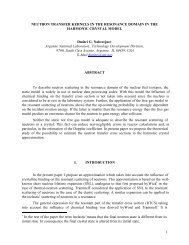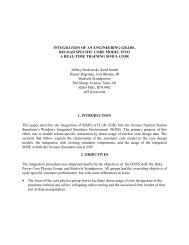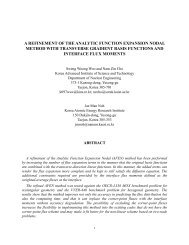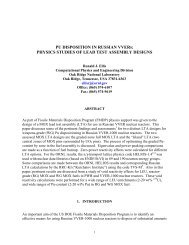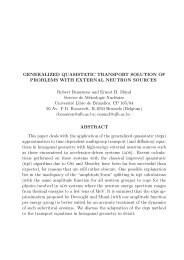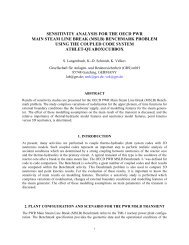K. Kobayashi and S. Tsumura
K. Kobayashi and S. Tsumura
K. Kobayashi and S. Tsumura
Create successful ePaper yourself
Turn your PDF publications into a flip-book with our unique Google optimized e-Paper software.
neutron flux was used. In the present method, no measured values are used, <strong>and</strong> a timing<br />
<strong>and</strong> strength of control rod absorber can be calculated in terms of kinetics parameters.<br />
Although numerical examples are given for simplicity, for a simple one group problem of<br />
slab geometry, the present method can be applied easily to the multi-group problems in<br />
multi-dimensions.<br />
2. THEORY<br />
2..1 MULTI-POINT KINETICS EQUATIONS<br />
Let us derive the multi-point kinetics equations for the xenon oscillation from time-dependent<br />
multi-group diffusion equations using region-wise importance functions for the production of<br />
fission neutrons 7) . In order to write the equations in a simple way, we define the destruction<br />
operator A <strong>and</strong> the production operators of neutrons, B <strong>and</strong> F for multi-group diffusion<br />
equations;<br />
A = −∇Dg∇ + Σrg − <br />
Σs(g ← g ′ ), B = χgF, F = <br />
g ′ =g<br />
g ′<br />
νΣfg ′(r), (1)<br />
where Dg, Σrg, χ g, νΣfg <strong>and</strong> Σs(g ← g ′ ) are the diffusion coefficient, removal cross section,<br />
fission spectrum <strong>and</strong> fission cross section multiplied by the number of fission neutrons of<br />
g−th group <strong>and</strong> scattering cross section from group g ′ to g.<br />
We write the absorption terms by xenon <strong>and</strong> control rod as<br />
δAX = σXgX(r,t), δAC = δΣ C g (r,t), (2)<br />
respectively, <strong>and</strong> A ′ = A + δAX + δAC, where X(r,t) is the xenon number density <strong>and</strong> σXg<br />
is the microscopic absorption cross section of xenon.<br />
We assume that the flux changes according to the following time dependent group diffusion<br />
equation,<br />
<br />
1 ∂φg(r,t) = −A<br />
vg ∂t<br />
′ + 1<br />
k B<br />
<br />
φg(r,t), (3)<br />
where φg(r,t) is the neutron flux of g−th group <strong>and</strong> k is a criticality factor to adjust the<br />
criticality in a steady state.<br />
Using the adjoint operator A † of operator A, we define the importance function to produce<br />
fission neutrons by<br />
A † Ggm(r) =νΣfg(r)δm(r), (4)<br />
where<br />
<br />
δm(r) =<br />
1, r ∈ Vm<br />
0, r /∈ Vm.<br />
2<br />
(5)


